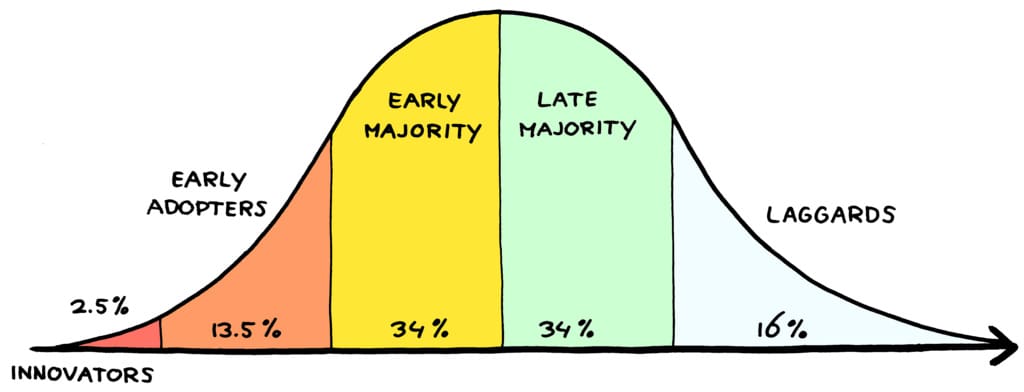Just because an idea is fresh and new doesn’t mean it will succeed. The technology industry is littered with products and services that fell by the wayside as quickly as New Coke and it’s partner Crystal Pepsi, McDonald’s Arch Deluxe, and the Ford Edsel.
Early adopting consumers want the next big thing in tech. They’re willing to shell out big bucks simply to be the first in their friend groups to have the latest gadget or t-shirt with an updated team logo. With heated competition for those dollars, your product rollout is critical to making sales in this key early adopter demographic.
Failure is An Important Part of Winning
All of technology’s most successful companies have had huge flops. Take Amazon, for example. Although this tech behemoth disrupts industry after industry, even it has had its share of missteps.
Do you remember Amazon Destinations? Probably not. Amazon’s short-lived foray into online hotel booking lasted only six months, from April to October 2016.
Did you consider trading in your Apple iPhone for an Amazon Fire Phone? Well, if you were an early adopter, you paid $200. But just before pulling the plug on this product, Amazon dropped the price to $0.99. In 2014, Amazon wrote off $170 million worth of unsold phones. They couldn’t even give them away!
Despite these and other high-profile failures, Amazon CEO Jeff Bezos vows to continue trying new products and potentially failing with them. “I’ve made billions of dollars of failures at Amazon.com. None of those things are fun. But they also don’t matter. What really matters is, companies that don’t continue to experiment, companies that don’t embrace failure, they eventually get in a desperate position where the only thing they can do is a Hail Mary bet at the very end of their corporate existence,” Bezos told Business Insider.
Retail giant Target has had to rein in and refocus its innovation efforts. After abruptly shutting down two major projects earlier this year, Target CEO Brian Cornell told Fortune that the company’s innovation needs to start with what it guests expect and how to meet those expectations. Target’s “Store of the Future” would have had robots speeding up the checkout process; person-less checkout and robots, something the media and venture capitalists can’t seem to get enough of recently (no checkout lines, just another $4.4 million investment, Elon Musk battles robot overlords, the rise of robot raising). The other initiative, “Project Goldfish” (really, we didn’t make that up), would have let Target get online with 3rd party vendors like Amazon and Walmart do.
A Partner in Innovation
Companies invest millions in product development and marketing, but even the well-funded, best-laid plans can and do fail. There’s chatter in the retail industry about stores without checkout lines or registers, but those establishments that aren’t just giant vending machines are a long way off. They will rely upon on technologies still in their nascent phases (or early in their hype cycle if you like that way of tracking tech) such as computer vision and human-machine interfaces.
If you think about your personal experience with an interface like voice recognition on its own, which has been around for decades; how often does Siri or Alexa actually understand what you say? Now imagine relying on this quality of voice recognition making decisions about product pricing at checkout – “Did you say A gallon of milk or 8 gallon of milk?” How stable would a store’s finances be if it priced products correctly only 75 percent of the time?
But all this doesn’t mean you shouldn’t innovate. There are plenty of trusted third-party providers of new products and services that let you test technologies without having to make major investments yourself. Best-of-breed partners will let you try out their systems with little to no cash up front and variable pricing.
Observa brings you innovation for your in-store data, keeping tabs on your marketing, merchandising execution, and retail compliance, helping to give you the best shot at making your product the next big thing.
